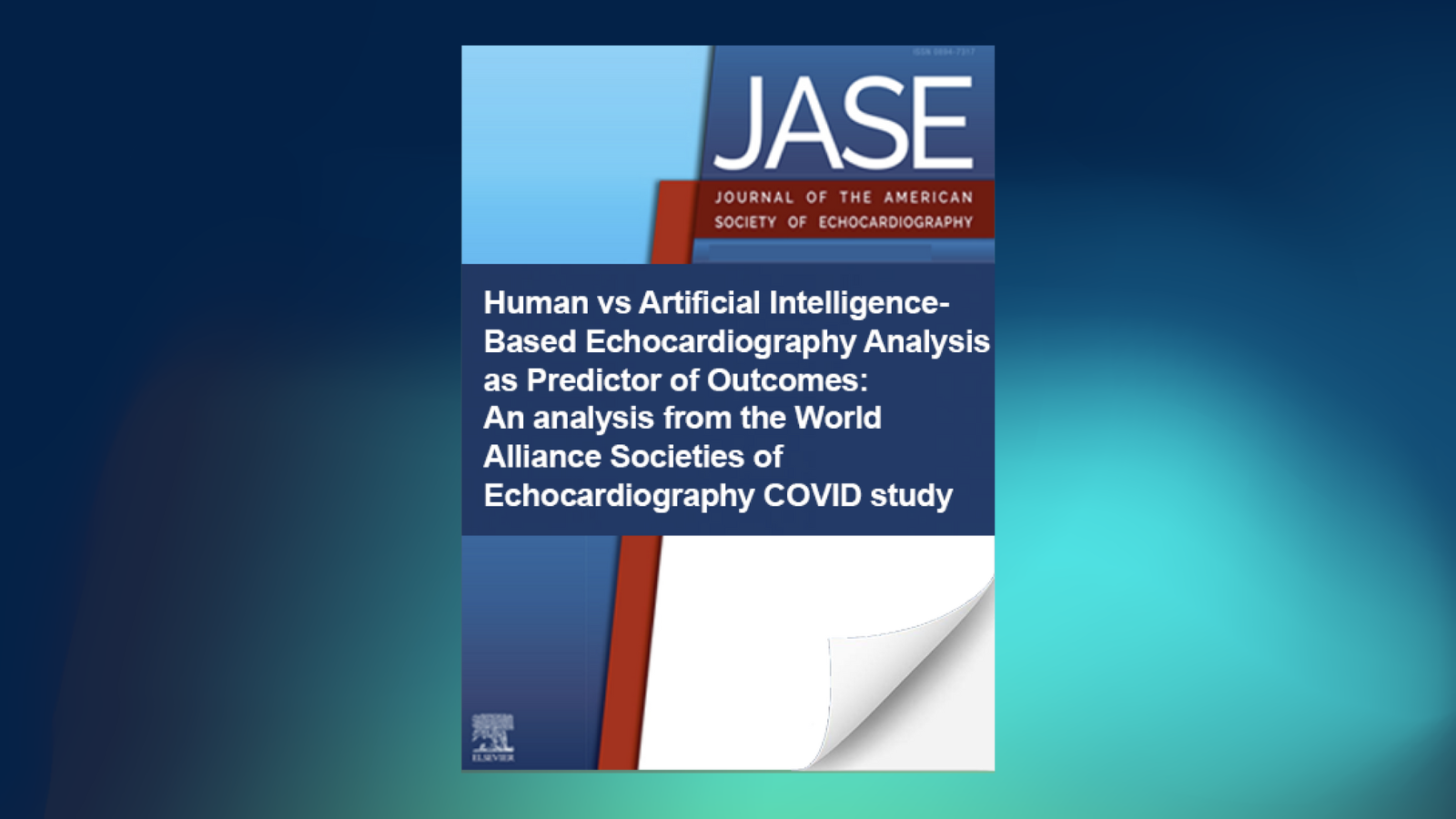
Human vs AI-based echocardiography analysis as predictor of outcomes (WASE-COVID study)
- | By Ultromics
- Clinical Extract
 |
Why it matters EchoGo Core is predictive of patient outcomes and is proven to be more superior than manual alone. |
Background:
Transthoracic echocardiography (TTE) is the leading cardiac imaging modality for patients admitted with COVID-19 infection, a condition of high short-term mortality. We aimed to test the hypothesis that artificial intelligence (AI) based analysis of echocardiographic images could predict mortality more accurately than conventional analysis by a human expert.
Methods:
Patients admitted to 13 hospitals for acute COVID-19 disease who had a TTE were included. Left ventricular (LV) ejection fraction (EF) and LV longitudinal strain (LS) were obtained manually by multiple expert readers and by an automated, AI software. The ability of the manual and AI analyses to predict all-cause mortality was compared.
Key Results:
870 patients were enrolled, mortality was 27.4% at a follow-up of 230±115 days. AI analysis had lower variability than manual for both LV EF (p=0.003) and LS (p=0.005). AI-derived LV EF and LS were predictors of mortality in univariable and multivariable regression analysis (OR=0.974, 95% CI= 0.956-0.991, p=0.003 for EF; OR=1.060, 95% CI 1.019-1.105, p=0.004 for LS), but LV EF and LS obtained by manual analysis were not. Direct comparison of predictive value of AI vs manual measurements of LV EF and LS was significantly better for AI (p=0.005 and 0.003 respectively). In addition, AI-derived LV EF and LS had more significant and stronger correlations to other objective biomarkers for acute disease than manual reads.

 |
EchoGo Core is FDA-cleared and backed by real-world validation. To learn more, download our whitepaper on EchoGo. |

Conclusion:
AI-based analysis of LVEF and LVLS had a similar feasibility to manual analysis, minimized variability and consequently increased the statistical power to predict mortality. AI-based analyses, but not manual, were significant predictors of in-hospital and follow-up mortality.
Full publication: https://www.onlinejase.com/article/S0894-7317(22)00351-0
Ultromics joins FNIH partnership to transform heart failure detection
Ultromics is working in partnership with The Foundation for the National Institutes of Health (FNIH), one of the largest and most respectful organizations for healthcare within the US, to pave the way for better classification and more precise strategies for HFpEF.

